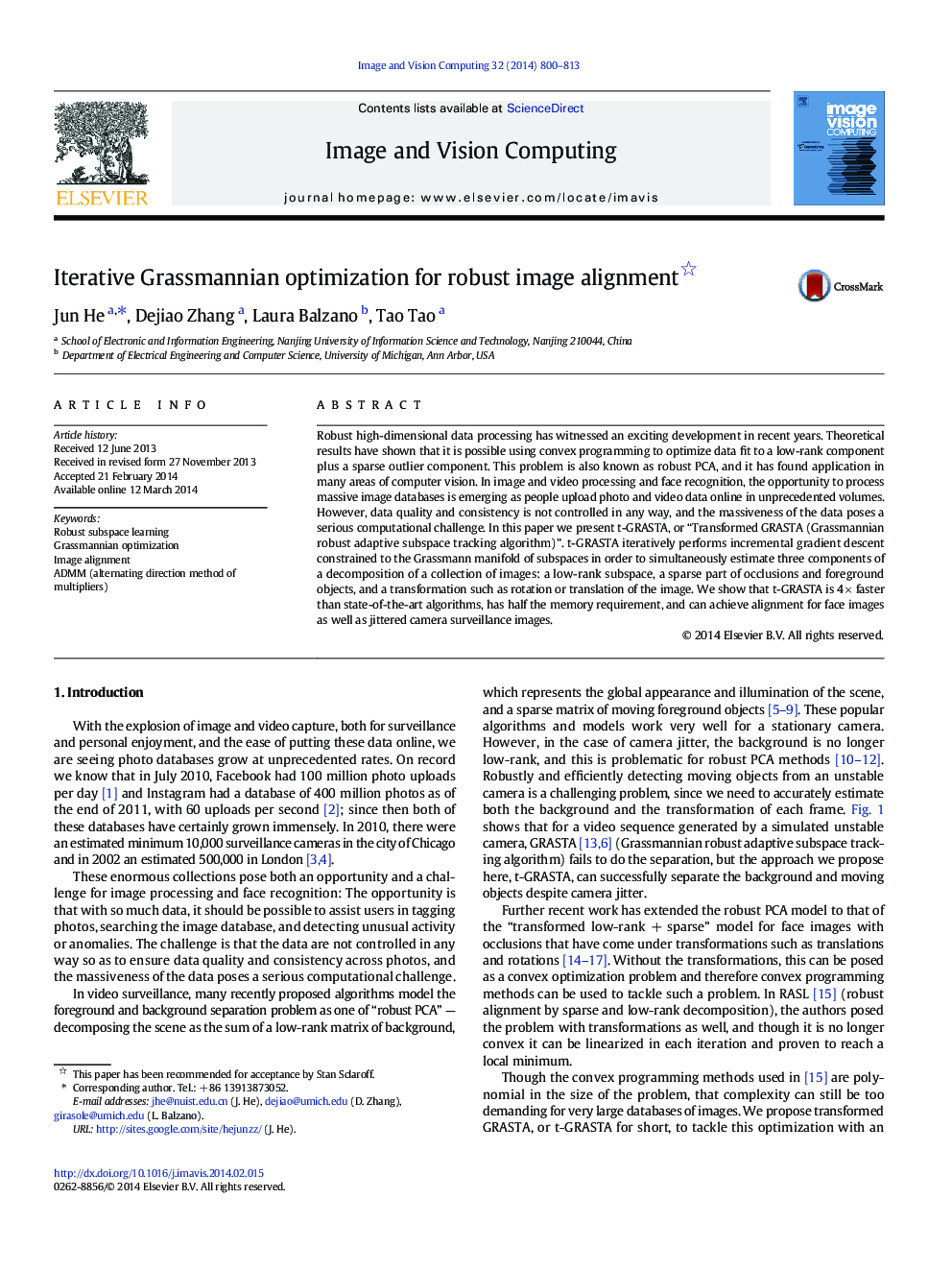| Article ID | Journal | Published Year | Pages | File Type |
|---|---|---|---|---|
| 528419 | Image and Vision Computing | 2014 | 14 Pages |
•Propose an online algorithm t-GRASTA for the transformed robust PCA problem.•Use a union of subspaces to approximate the nonlinear subspace learning process.•Demonstrate the fully online mode of t-GRASTA with videos with camera jitter.
Robust high-dimensional data processing has witnessed an exciting development in recent years. Theoretical results have shown that it is possible using convex programming to optimize data fit to a low-rank component plus a sparse outlier component. This problem is also known as robust PCA, and it has found application in many areas of computer vision. In image and video processing and face recognition, the opportunity to process massive image databases is emerging as people upload photo and video data online in unprecedented volumes. However, data quality and consistency is not controlled in any way, and the massiveness of the data poses a serious computational challenge. In this paper we present t-GRASTA, or “Transformed GRASTA (Grassmannian robust adaptive subspace tracking algorithm)”. t-GRASTA iteratively performs incremental gradient descent constrained to the Grassmann manifold of subspaces in order to simultaneously estimate three components of a decomposition of a collection of images: a low-rank subspace, a sparse part of occlusions and foreground objects, and a transformation such as rotation or translation of the image. We show that t-GRASTA is 4 × faster than state-of-the-art algorithms, has half the memory requirement, and can achieve alignment for face images as well as jittered camera surveillance images.
Graphical abstractFigure optionsDownload full-size imageDownload high-quality image (133 K)Download as PowerPoint slide
